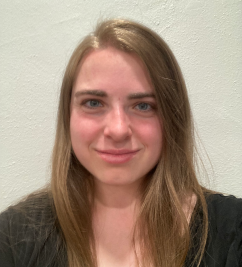Conference Agenda
All exhibits must be show ready by 6:30 pm on Thursday
Hor d’oeuvres and Beverage
David Starmer, BSc, DC, MHS
Sharik Peck, PT, MRC
Chelisa Atkinson, BS
Kim Adie, DC
David Lundquist, DC
David Starmer, BSc, DC, MHS
Wendy Coren, DC
David Lundquist, DC
David Starmer, BSc, DC, MHS
Donna Gigliotti, DC
Steven Hebrock, MS, BA
Laurie McCauley, DVM, DACVSMR
Karen Gellman, DVM, PhD
Laurie McCauley, DVM, DACVSMR
Karen Gellman, DVM, PhD
Lecture Details
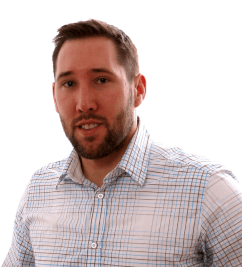
Navigating the Future: Research Priorities and Future Research Directions
Join us for an inspiring presentation where we delve into the pivotal insights and strategic directions shaping the future of research for Veterinary Chiropractic. This session will provide a comprehensive overview of the key findings from recent focus groups, highlighting the priorities identified by a large group of diverse AVCA stakeholders. We will explore the innovative strategies CMCC is implementing to advance research in these critical areas, showcasing our commitment to driving progress and fostering excellence. Attendees will gain valuable perspectives on how these priorities are being translated into actionable plans, and the impact they are expected to have on the broader research community. Whether you're a practitioner, researcher, or other stakeholder, this presentation will offer a unique opportunity to understand the future trajectory of CMCC's research initiatives and how you can contribute to and benefit from these advancements. Be prepared to be motivated and inspired as we navigate the future together.
Healthy Nerves, Happy Tails: Waking up Neuropathy
In this lecture, we will explore the use of resonance therapy in waking up the nerves for patients dealing with neuropathy. We will discuss various complementary therapeutic techniques that can aid the animal chiropractor in bringing back sensation and use of limbs or other areas of the body experiencing numbness, tingling, or paralysis. Attendees will take home knowledge of these techniques and understand how to adapt them to easily integrate into the practitioner's practice.
The Impact of Chiropractic Care on Pain, Functional Outcomes, and Gait Symmetry in Dogs with Mobility Impairments Using Clinical Measurement and Gait Analysis Instruments
Musculoskeletal (MSK) conditions are a leading cause of pain and mobility issues in dogs, yet conservative treatment options remain limited. Animal chiropractic care is increasingly used to manage pain, improve mobility, and enhance performance; however, empirical evidence remains sparse in canine populations. This study employed a two-phase design to evaluate the effects of chiropractic manipulation on pain, functional ability, and gait symmetry in client-owned dogs with MSK impairments. The first phase assessed pain and functional status using both owner-reported and practitioner-assessed outcome measures. The second phase objectively analyzed gait symmetry using a pressure-sensitive walkway, focusing on temporospatial parameters such as stride length, stance time, and total pressure index. Significant improvements were observed in pain scores, functional measures, and gait symmetry—particularly at the trot—suggesting enhanced neuromechanical function and more balanced weight distribution following chiropractic care. These findings provide early evidence supporting chiropractic manipulation as a promising conservative intervention for canine MSK dysfunction and underscore the need for further research in this field.
Extremity Adjusting Equine
This lecture will go through how to evaluate through motion palpation and the specifics for adjusting front and hind limbs of the equine. The lecture will cover handler instructions and safety, equine positioning and safety, practitioner positioning, practitioner safety and adjusting.
Force Sensing Simulation Workshop : Capacity and Adaptability Competence for Canine Adjusting
What makes the perfect adjuster? Some may say the ultimate adjuster is someone who can adapt the use of their force across a large spectrum to meet the needs of their patients big or small. Someone who has not only control of their force but can judiciously execute the appropriate force lighting fast. Whether this is fact or fiction it forms the basis of many principles in education. This workshop is meant to provide participants with a hands-on opportunity to explore simulation methods used for training animal chiropractic adjustments. Participants will have a chance to profile their own adjustments for their control of force/speed using advanced technology. Not only will you have a chance to walk away knowing more about your skills, but you can also have fun challenging yourself to adapt your adjustments to match specific targets across a large spectrum that have been identified by experts in your profession. There is no safer place to test your limits and learn more about your capacity and adaptability than with simulation technology. Come have fun and try it out.
Kinesiology Taping for Advanced Applications
How to apply kinesiology tape to improve mobility and coordination.
Be Your Best and Watch Your Practice Soar
I will share with you the good old fashioned and trustworthy methods I have used for 30 years to attract and retain clients. These methods do not require social media or selling yourself.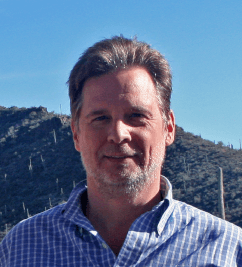
Hoof Care Myths and Misconceptions
As with many areas of animal care, there are a number of common myths and misconceptions surrounding what can – and cannot – be accomplished through equine hoof care. The consequences of relying on these fallacies vary widely, and range from simply wasting time and money to more dire results including long-term damage. This lecture explores some of the more common hoof care myths, thus enabling the chiropractor to help his/her clients make hoof care choices that facilitate the healing process rather than hinder it or cause harm.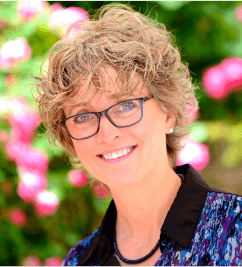
Degenerative Myelopathy: Basic Rehab and Laser Therapy Strategies From Beginning to End
Degenerative myelopathy (DM) is a non-painful fatal disease affecting dogs of many breeds. Yet compensatory pain can be an issue and needs to be addressed. 20 years ago, we thought dogs that were diagnosed with DM, would have 6 to 12 months to live before their quality of life was minimal. Now we are seeing dogs live 3 to 5 years after diagnosis. There are many things that we can do to improve the quality of life and lifespan for these pups when we have an early diagnosis and initiation of treatment. In this lecture we will cover early diagnosis as well as multiple areas of treatment including physical rehabilitation, laser therapy, and other holistic modalities.
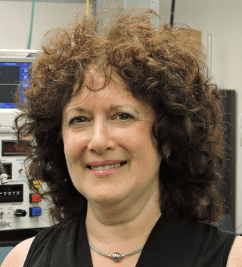
The Equine Stomotognathic System: What is it? What does it matter to equine performance?
The stomatognathic system is a closed kinematic chain involving the skull, dentition, muscles of mastication, larynx, tongue, hyoid apparatus, cervical vertebrae, cranial thoracic vertebrae and all the musculature connecting them. Aside from its function in prehending and mastication food, it is a critical reporter of proprioceptive information to the postural control systems of the brain. In this lecture, we will examine the basic anatomy, physiology and neurology of the stomatognathic system as it relates to postural reporting and daily functional maintenance of standing posture and of locomotion.
Fascinating Fascia: Unveiling the Hidden Matrix
Fascia used to be thought of as the white fibrous tissue that surrounds muscles, something to cut when we perform surgery. Now we know that it affects the whole body and can cause pain, dysfunction, and postural abnormalities. Get a sense for what it truly is, how it affects our patients, and simple techniques that you can use tomorrow to make you patients move and feel better.

The Equine Stomotognathic System: What Can Go Wrong in Domestic Horses?
While every animal has evolved to perform the basic requirements of living (eat, move, reproduce), domestic animals are in the unique position of having their living requirements determined by another species, namely imperfect humans! There are systematic, deleterious ways in which both nutrition and locomotion are impacted by equine domestication. These factors profoundly affect the work of equine chiropractors, because they are structural distortions in anatomic regions critical to proprioceptive reporting, which essentially behave like scars. Although sometimes good chiropractic adjusting can temporarily override these distorted inputs, the patient will always return to their distorted compensatory pattern governed by the anterior-posterior and/or lateral asymmetries in their stomatognathic chain. These compensations will affect spinal function, hoof growth and balance, locomotion and ultimately the capacity to heal and move with comfort for athletic tasks.Patricia Holl, DC
Kim Adie, DC
Kirstin Becker, Veterinarian
Donna Gigliotti, DC
Paul Brumett, DVM
Wendy Coren, DC
Anna Crane, DC, MS. DACNB
David Starmer, BSc, DC, MHS
Wendy Coren, DC
Bill Ormston, DVM
David Starmer, BSc, DC, MHS
Nancy Loes, DVM, MBA
Ava Frick, DVM
David Starmer, BSc, DC, MHS
Laurie McCauley, DVM, DACVSMR
Ava Frick, DVM
David Starmer, BSc, DC, MHS
(Family Friendly)
Hor d'oeuvres and Beverage (Cash Bar)
- Check In at Registration Desk 1 Hour Before Lab for Instructions
- Pre-Registration Required
- Lab is Non-Transferable/Non-Refundable
- Lab 1: Judith Shoemaker, DVM - Stomatognathic System
- Lab 2: David Lundquist, DC - Extremity Adjusting
- Lab 3: Sharik Peck, PT, MRC and Chelisa Atkinson, BS - Neuropathy
- Lab 4: Steven Hebrock, MS, BA - Balanced Hoof Trimming
- Lab/Lecture 5: Don Howard, DVM and Ron Leick, DVM - Acupressure Diagnostic Points
Lecture Details

The Neurology of Therapeutic Touch
Joint position errors result in chronic and debilitating tissue compromise. Physical deformation of tissue, or therapeutic touch, results in restoring motion to joints and activating vitally needed receptor information to the brain. We will explore the systemic consequences of hypomobility, including neurologic, biomechanical, and physiologic, and examine how therapeutic chiropractic manipulation can improve neurologic integrity to the central nervous system and restore health.
Canine Advanced Technique: Exploring Clinical Challenges, Innovations, and Hands-On Mastery
This advanced canine technique seminar is designed for practitioners who wish to build on foundational adjusting principles by deepening their technical skillset, exploring innovative approaches, and collaboratively addressing clinical challenges. The session provides a platform for open dialogue and peer exchange, encouraging participants to reflect on and refine their current adjusting strategies. Attendees will have the opportunity to present specific listings or techniques they find challenging, share novel ideas, and learn new setup options for complex canine adjustments, including first rib, upper cervical, and occipital listings, among others. Through presentation, discussion, and hands-on application, participants will walk away with greater confidence, enhanced technique precision, and a fresh perspective on canine chiropractic care.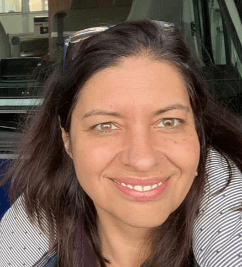
Differential diagnosis for two scenarios: The horse that stumbles and the horse that doesn't lock the knee (buckling knees or over at the knee)
Decision tree type lecture with different causes and management approaches for horses that stumble and horses that exhibit buckling carpal joints.
Lumbar Spine - so much to know
This lecture will cover the unique anatomy and complex neurology of this area, including the viscera-somatic and somato -visceral implications of misalignments that occur in the lumbar spine. Adjusting techniques and functional neurological techniques will be introduced to help the nervous system heal more efficiently.
The Power of Pulsed Electromagnetic Field Therapy (PEMF), Healing and Pain Relief
As Practitioners, many of our clients are looking for modalities that can be used at home. Pulse Electromagnetic Field (PEMF) therapy is an effective treatment for many of our patients that is easy to use and cost effective. This presentation will go over the history, science, recent research and use of Pulsed Electromagnetic Field Therapy with our patients to help with healing and pain relief.
Improving Canine Mobility with Fascia in Mind
From analysis to chiropractic and adjunctive therapy this class will provide step by step procedures to improve canine mobility.
This is your brain on pain...
Delve into both acute and chronic pain, how each can alter the animal brain; affecting behavior, mobility, and recovery. We'll examine neuroplasticity, sensitization, and the role of the central nervous system in perpetuating discomfort. Discuss identifying subtle signs of pain, how misalignments influence neural pathways, and how chiropractic care can interrupt pain cycles, restore function, and support neurohealth. Understanding pain's brain-based impact is critical for effective, compassionate treatment.
Integrating video replay from your mobile device into your practice for patient analysis and patient education
Have you ever wished you could see your patients in their natural environments? Have you ever wanted to slow down a video to analyze your patient’s movements? Have you ever wished you could compare your patient’s motions before and after treatment? Have you ever wished you could illustrate faulty movements in your patients to educate their owners? The reality is all these things are super easy to do with free software available on most mobile devices (cell phones and tablets). Please join us as we walk you through how to do these things. This workshop is hands experience on where you can use your own device or ones provided by our facilitators while we practice recording, analyzing, comparing and sharing videos. The possibilities are endless for how you can apply this in your daily life. Come join us to learn more. You do not need to be tech savvy to participate. We welcome all attendees.
Treatment Plans: Good or Bad for the Profession
Dr. O will examine the pros and cons of having treatment plans available for animal owners.
Behavioral Health and Veterinary Chiropractic: Calming and Comforting Synergy
By reducing pain and improving physical comfort, veterinary chiropractic profoundly impacts an animal’s behavioral health. This course will review the rationale for incorporating nutritional supplements that beneficially modulate symptoms of fear, anxiety and stress into an overall veterinary chiropractic healthcare management plan, a multiplicative modality that complements and enhances the significant impact of animal chiropractic on a pet’s behavior (mood, activity level and responsiveness) and well-being, not only towards calming and comforting, but also towards a better quality of life, strengthening the emotional bond between pets and pet parents.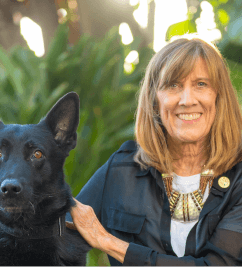
Minerals and Heavy Metals can Interfere with Adjustment Stability
The availability and balance of minerals along with the presence of heavy metals can create weakened tissue stability. Animals that do not hold adjustments could fall into one of the categories of low minerals, poor protein assimilation, adrenal exhaustion and cellular debilitation. Any of that can then be augmented by toxic metals. Fur-Tissue Mineral Analysis is a simple test that reports the data contained in the interstitial fluid during the formation of the follicle. This presentation will give scientific data, explain how to interpret the test graph, what key patterns lead to weakened muscles, connective tissue and nervous system function, and give suggestions for supporting chiropractic adjustments.

Canial Cruciate Disease - Early Signs, Prevention Tips, and Preventing the Second Tear
Did you know that you can tell when there is inflammation in the stifle, months to years before the actual CCL rupture? You can even teach your best clients how to do a simple home test to identify this, way before you can palpate actual effusion. From there we can discuss eliminating the inflammation and strengthening the structures that support the stifle. If the CCL is already ruptured, learn methods to prevent a second rupture on the contralateral stifle.Lab Details
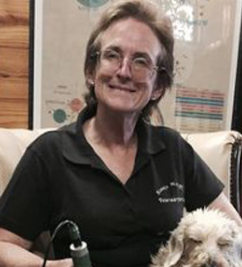
Stomatognathic System
Participants will be able to confidently assess whether a horse's stomatognathic system may be contributing to their chiropractic and/or locomotion issues.
Extremity Adjusting
In this lab each participant will receive instruction and guidance on adjusting the equine extremity joint by joint with a focus on safety and efficiency. Controlling the environment is a very important aspect of safety for all involved and will be stressed.
Neuropathy
In this lab, we will explore through hands-on participation the use of resonance therapy in waking up the nerves for patients dealing with neuropathy. We will perform various complementary therapeutic techniques that can aid the animal chiropractor in bringing back sensation and use of limbs or other areas of the body experiencing numbness, tingling, or paralysis. Attendees will take home practical knowledge of these techniques and understand how to adapt them to easily integrate into their practice.
Balanced Hoof Trimming
Watching a proper horse hoof trim is an experience not many people have had, simply because the overwhelming majority of professional hoof care providers in the U.S. have not been educated on the importance of proper hoof balance, and the unintended but very real negative consequences of imbalance. This lab will demonstrate how a horse's hooves should be trimmed to facilitate the horse's long-term comfort and soundness while realizing the best movement possible, with an emphasis on identifying the properly-balanced hoof.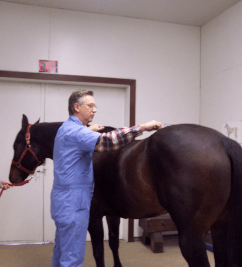

Acupressure Diagnostic Points
In this hands-on lab, Diagnostic Acupressure Points will be discussed, described, and demonstrated so that, when properly used, can greatly enhance the application of Chiropractic. Underlying conditions as well as accuracy in locating areas of subluxations will be discussed. Participants of this hands-on lab, should expect to take home and make immediate use for the benefit of both the patient and provider, from the information provided in this Laboratory Demonstration.Simon Wang, BSc., MSc., D.C.
David Lundquist, DC
Grand Drawing at 10:50
Dina LiVolsi, D.C.
Kirstin Becker, Veterinarian
Paul Brumett, DVM
Bill Ormston, DVM
Laurie McCauley, DVM, DACVSMR
Bill Ormston, DVM
- Check In at Registration Desk 1 Hour Before Lab for Instructions
- Pre-Registration Required
- Lab is Non-Transferable/Non-Refundable
- Lab 1: Donna Gigliotti, DC - Low Force Adjusting
- Lab 2: Wendy Coren, DC - Improving Canine Mobility
- Lab 3: Kim Adie, DC and Annette Langlois, DC - Adv Technique
- Lab 4: Sharik Peck, PT, MRC and Chelisa Atkinson, BS - Neuropathy
- Lab 5: Steven Hebrock, MS, BA - Dissection of the Equine Lower Limb and Foot
Lecture Details

Bridging the Gap: Reconciling Modern Evidence and Historical Theories in Spinal Manipulative Therapy
In this dynamic and thought-provoking presentation, Dr. Simon Wang will delve into the fascinating world of Spinal Manipulative Therapy (SMT), exploring the intricate interplay between emerging scientific evidence and long-standing historical theories. Attendees will embark on a journey, examining how contemporary research aligns with or challenges traditional beliefs about the mechanisms and benefits of SMT. This presentation aims to equip practitioners with the most up-to-date evidence available, empowering them to confidently address critics, dispel prevalent myths, and highlight the strengths of manual therapy, particularly SMT. By bridging the gap between past and present, Dr. Wang will provide an overview of the state of the evidence, showcasing how current insights can support clinical practice through a modern lens. Whether you are a seasoned practitioner or new to the field, this presentation will offer valuable insights to enhance your understanding and application of SMT. Join us for an engaging session that promises to be a highlight of the conference, leaving you inspired and informed.
Breaking Down the Lastest Fascial Research
This lecture will cover the latest research from the 2025 Fascial Research Congress held in New Orleans in August of 2025. This conference brings together the top researchers of fascia from all over the world. The conference is held every 3 years and all the leaders if fascial research and treatment present their findings. This work has changed how fascia is perceived and the importance of proper evaluation and treatment for human and animals.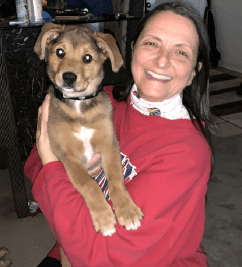
Diagnosis, Treatment, and Rehabilitative Exercises for Hind End Issues in Canine
This presentation takes a "full body" approach to canine hind end weakness and lameness that may also be manifesting as front end issues. A review of a study of subluxated coxafemoral joints will be presented as well as common chiropractic findings in the pelvis and lumbar spine. Typically associated shoulder issues will be discussed. An easy three-part home rehabilitation program will be demonstrated for owners to help their dog at home.
Everything normal with you? A selection of skeletal variations, malformations, pathologies and clinical implications in the equine spine
Anatomical variations, malformations and some spinal pathologies are more common than expected. They can influence our chiropractic findings and/or the posture and compensatory mechanisms of the horse. Therefore those abnormalities might call for an adapted treatment and management regime.
Canine Back Bracing, IVDDz and Degenerative Myelopathy
Veterinary Orthotics (Braces) are a valid option for many patients with stifle, carpal or hock injuries. Use of Spinal orthotics in people is common for lower back disease but is relatively new to Small Animal Practice. This presentation will discuss the theory and possible uses of Canine Back Braces to include Intervertebral Disc Disease and Degenerative Myelopathy.
What did I miss?
This is a common question that most animal chiropractors have asked themselves at least once. We must remember that the principles of nature often interfere with how fast the patient can respond.
Laser How To: Best Effects When Treating Joints
Do you want to have the most effective laser treatments while spending less time treating the patient? Let's review some anatomy and easy tricks and tips to help you achieve optimum outcomes when lasering your patients. From direct treatment of the cruciate ligament to sesamoids and coronoid processes, we have you covered.Lab Details

Low Force Adjusting
In this lab you will learn how find the primary misalignments and then use low force techniques to correct. Goal is to help doctors focus and learn techniques that offer results and are easier on the patient and doctor's bodies.
Improving Canine Mobility
From analysis to chiropractic and adjunctive therapy this class will provide step by step procedures to improve canine mobility.

Adv Technique
This advanced canine technique seminar is designed for practitioners who wish to build on foundational adjusting principles by deepening their technical skillset, exploring innovative approaches, and collaboratively addressing clinical challenges. The session provides a platform for open dialogue and peer exchange, encouraging participants to reflect on and refine their current adjusting strategies. Attendees will have the opportunity to present specific listings or techniques they find challenging, share novel ideas, and learn new setup options for complex canine adjustments, including first rib, upper cervical, and occipital listings, among others. Through presentation, discussion, and hands-on application, participants will walk away with greater confidence, enhanced technique precision, and a fresh perspective on canine chiropractic care.
Neuropathy
In this lab, we will explore through hands-on participation the use of resonance therapy in waking up the nerves for patients dealing with neuropathy. We will perform various complementary therapeutic techniques that can aid the animal chiropractor in bringing back sensation and use of limbs or other areas of the body experiencing numbness, tingling, or paralysis. Attendees will take home practical knowledge of these techniques and understand how to adapt them to easily integrate into their practice.
Dissection of the Equine Lower Limb and Foot
Given the complex, three-dimensional forms of the bones of the equine foot, grasping the internal structures and their relationships in the horse’s foot is challenging, if not impossible, without a first-hand look. This lab will aid the chiropractor in understanding the role of these structures, facilitating diagnostic efforts including radiograph evaluation, and impart a genuine appreciation for the complexity of the foot and its structures.
